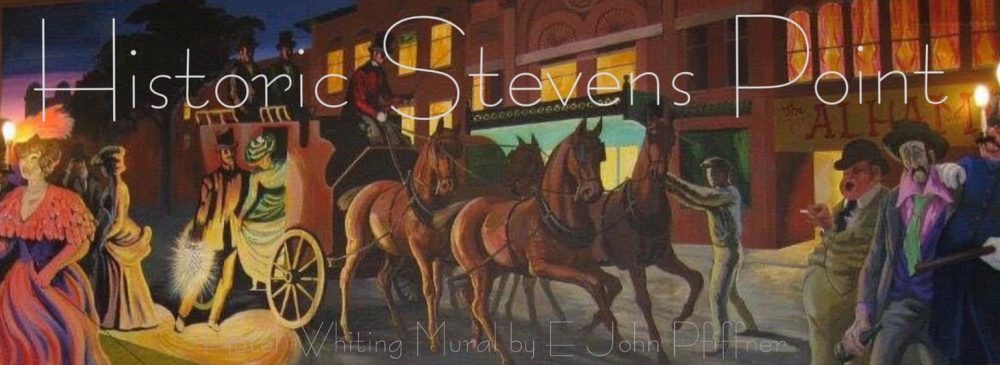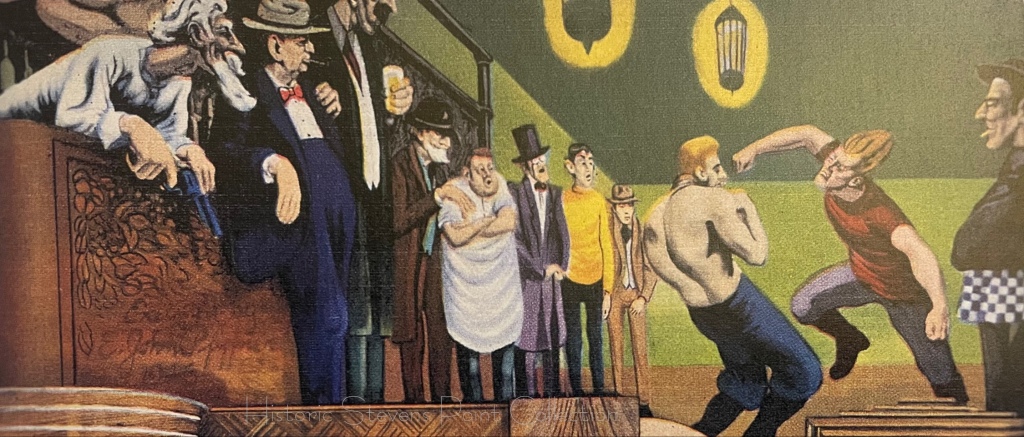On a cold day in December, a few weeks back, Historic Stevens Point made a special visit to the abandoned church building awaiting its imminent demise at 1700 Strongs Avenue on the corner of Brawley Street. As soon as we noted that the city was looking for demolition bids on the neglected and abandoned Trinity Lutheran Church building we made special arrangements to gain access so that we could take the opportunity to document the beauty of not only the outside, but the inside of the church, as it stands today, before it is razed and forever removed from the landscape, but not the memories, of Stevens Point.
We made sure to bring along our new friend, Barry Calnan of the Calnan Design Group.
Calnan creates 360 degree walk through interactive virtual tours using Matterport cameras and services by capturing thousands of photos of a space in just moments. Anyone can hire him for any kind of idea where you may need or want a virtual tour like a real estate walk through, insurance claim, restoration project, construction build, or facilities management. He can capture the entire building as it stands at the moment to create a fully immersive interactive virtual reality 360 3d tour. It’s quite amazing. People, the future is now!
Calnan, who is a Texas to Stevens Point transplant and has lived as far away as Dubai, says he loved Stevens Point from his first day in town. Stevens Point seems to have that affect on people. And it clearly shows that he does love the town. He recently began a project called Virtual Point where he has created a number of free to view virtual reality 3d tours of places and spaces in Stevens Point like the now razed Belke Building and the new Cultural Commons at Pfiffner Pioneer Park.
Our day at the church was a cold one with a temperature of 12 degrees outside, but Calnan was able to get his cameras and equipment working to collect the thousands of photos it takes to create the virtual reality scans. During the hour or so that Barry was busy with his equipment capturing images, we took the time to video some of the property as well. You can see that raw footage with commentary of the interior and exterior of the building currently on our Historic Stevens Point Facebook page as well as a recent recorded live presentation about the unfinished research we are doing on the building. We will eventually edit and embed those videos into a blog post for non Facebook users.
Calnan is also available for 3D Design, and 3D printing in the Central Wisconsin area and was the main 3d printing volunteer during a collaboration with CREATE Portage County printing protective face shields for the local medical community at the start of the COVID pandemic. With a background in engineering design and 3d printing, Calnan says the move to 3d data capture and virtual reality tours came quickly. He explained that he has been interested in creating these virtual reality tours on a volunteer basis as examples of what he can create to help promote the technology to the public and its endless possibilities.
The scans that Calnan creates can be used in a multitude of manners. As historians with a mind for preservation, we instantly saw the use of this technology as not only a manner to document historic buildings in the Stevens Point area, but also as a continuing way to engage the community in historic preservation, advocacy, and appreciation. There is so much that can be done with the scans that Calnan creates combined with the historic information we can provide. Together we can not only virtually preserve history, but make history at the same time. And by doing so we can save history for future generations, which is really one of the basis of historic preservation on whatever level.
“Historic preservation is not about the past, it is about building a better future together.” —Katherine Malone-France, chief preservation officer of the National Trust for Historic Preservation.
You can find the Calnan Design Group’s full set of virtual reality tours and more information about his services at Virtual Point, Virtual Reality Tours and Calnan Design Group.
Click the blue text to take a virtual step into history with these select virtual reality historical tours from Calnan Design Group including the Trinity Lutheran Church Building, The Historic Fire House on Strongs, PCHS’s headquarters the Historic Beth Israel Synagogue and the now razed Belke Lumber Company Building of which we have written a timeline on it’s infamous past.
Historic Stevens Point would like to extend our gratitude to Mayor Mike Wiza for not only allowing us access to the building but also connecting us to Calnan. Without that connection we would not have been able to put this collaboration together to be able to give the public access to this incredible beautiful Gothic Renaissance church building and to document its last days for future researchers, historians, and history lovers alike.
We look forward to our next collaboration together! If you have ideas for scans of a historic property in the Stevens Point or Portage County area, please let us know!
Email contact@historicstevenspoint.com
Trinity Lutheran Church Building






















































